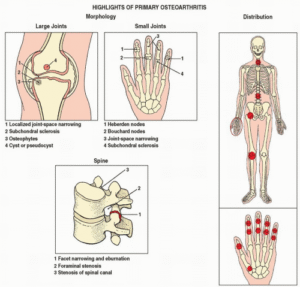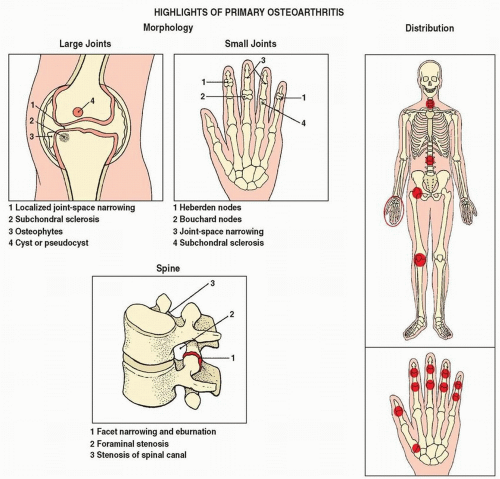Degenerative Joint Disease ICD 10 Code, also known as osteoarthritis, is one of the most prevalent musculoskeletal conditions worldwide. It is a leading cause of chronic disability, especially in older adults, and affects millions of people. In healthcare documentation, diagnosis codes play a crucial role in treatment planning, insurance billing, and medical recordkeeping. The ICD-10 code for Degenerative Joint Disease helps clinicians, coders, and insurance providers maintain standardized communication.
This article provides a detailed overview of Degenerative Joint Disease, its clinical significance, and the appropriate ICD-10 codes used in different scenarios.

What Is Degenerative Joint Disease?
Degenerative Joint Disease ICD 10 Code is the medical term for osteoarthritis, a condition that occurs when the protective cartilage cushioning the ends of bones wears down over time. While it can affect any joint in the body, it most commonly impacts:
-
Knees
-
Hips
-
Spine (cervical, thoracic, and lumbar)
-
Hands and fingers
Symptoms of DJD include:
-
Joint pain and stiffness
-
Swelling and inflammation
-
Decreased range of motion
-
Grating or clicking sensations
-
Bone spurs (osteophytes)
DJD is typically diagnosed through physical examination, medical history, and imaging such as X-rays or MRI.
Understanding ICD-10 Coding
ICD-10 (International Classification of Diseases, Tenth Revision) is a globally used diagnostic tool developed by the World Health Organization (WHO). It provides codes for diseases, conditions, and a wide range of health-related issues.
Each ICD-10 code has a unique alphanumeric identifier that helps:
-
Standardize healthcare documentation
-
Streamline insurance claims and reimbursements
-
Facilitate epidemiological research and statistics
For Degenerative Joint Disease, the ICD-10 code falls under the “M15–M19” block, which covers various forms of osteoarthritis.
Primary ICD-10 Codes for Degenerative Joint Disease
M15 – Polyosteoarthritis
This category refers to osteoarthritis affecting multiple joints.
-
M15.0: Primary generalized (osteo)arthritis
-
M15.1: Heberden’s nodes (with arthropathy)
-
M15.2: Bouchard’s nodes (with arthropathy)
-
M15.4: Erosive osteoarthritis
-
M15.9: Osteoarthritis, unspecified multiple sites
This is applicable when multiple joints are affected but without specification of which joints.
M16 – Osteoarthritis of Hip
-
M16.0: Primary osteoarthritis of hip, bilateral
-
M16.1: Primary osteoarthritis of hip, unilateral
-
M16.4: Post-traumatic osteoarthritis of hip, bilateral
-
M16.5: Post-traumatic osteoarthritis of hip, unilateral
-
M16.9: Osteoarthritis of hip, unspecified
This code is important when the DJD is localized to one or both hips.
M17 – Osteoarthritis of Knee
-
M17.0: Bilateral primary osteoarthritis of knee
-
M17.1: Unilateral primary osteoarthritis of knee
-
M17.4: Post-traumatic osteoarthritis of knee, bilateral
-
M17.5: Post-traumatic osteoarthritis of knee, unilateral
-
M17.9: Osteoarthritis of knee, unspecified
Knee osteoarthritis is among the most common types of DJD, particularly in older adults and those with a history of joint injury or obesity.
M18 – Osteoarthritis of First Carpometacarpal Joint
-
M18.0: Bilateral primary osteoarthritis of first carpometacarpal joints
-
M18.1: Unilateral primary osteoarthritis of first carpometacarpal joint
-
M18.9: Osteoarthritis of first carpometacarpal joint, unspecified
This code applies to osteoarthritis specifically affecting the base of the thumb.
M19 – Other and Unspecified Osteoarthritis
This category covers other forms not classified above.
-
M19.0: Primary osteoarthritis, other sites
-
M19.1: Post-traumatic osteoarthritis, other sites
-
M19.9: Osteoarthritis, unspecified site
This is a general-use code often applied when the exact joint or cause is not clearly identified.
Why Accurate ICD-10 Coding Matters
Correct ICD-10 coding for DJD is crucial for multiple reasons:
Proper Medical Billing
Insurance claims rely heavily on the accuracy of diagnosis codes. Errors may lead to:
-
Denied claims
-
Delayed reimbursements
-
Non-compliance with coding standards
Improved Patient Care
Precise coding reflects the full scope of a patient’s condition, allowing healthcare providers to:
-
Choose targeted treatment plans
-
Track progression over time
-
Refer to specialists effectively
Research and Data Collection
Accurate ICD-10 coding contributes to:
-
Public health data
-
Clinical research
-
Resource allocation
Common Mistakes to Avoid in DJD Coding
-
Using unspecified codes when detailed ones are available (e.g., using M19.9 instead of M17.0 for known bilateral knee DJD)
-
Not updating codes after imaging or diagnosis clarifies the affected joint(s)
-
Coding degenerative disc disease (spinal disc degeneration) under osteoarthritis incorrectly—this usually requires an M50–M54 code range instead
Best Practices for Coders and Providers
-
Always match the clinical documentation with the correct ICD-10 code
-
Specify laterality (left/right/bilateral) and primary vs. secondary DJD
-
Review imaging reports and operative notes when available
-
Use unspecified codes only when truly applicable
Treatment and Management of DJD
Though coding is essential for documentation, patients and providers also focus on the management of degenerative joint disease. Treatment typically includes:
Conservative Therapies:
-
Physical therapy
-
Anti-inflammatory medications
-
Weight management
-
Assistive devices (e.g., braces, orthotics)
Interventional Approaches:
-
Corticosteroid injections
-
Viscosupplementation
-
Platelet-rich plasma (PRP) therapy
Surgical Options:
-
Joint replacement (hip/knee arthroplasty)
-
Arthroscopic surgery (for joint cleanup)
-
Osteotomy (realignment of bones)
Early diagnosis and intervention can slow the progression and improve quality of life.
Final Thoughts
DJD ICD 10 is a chronic and progressive condition, but with proper diagnosis, documentation, and management, individuals can maintain mobility and reduce pain. Using the correct ICD-10 codes for DJD ensures effective communication between healthcare providers, accurate billing, and better care outcomes.
Whether you’re a healthcare professional, medical coder, or patient seeking to understand your diagnosis better, knowing the appropriate ICD-10 codes for osteoarthritis is a vital step in the continuum of care.
